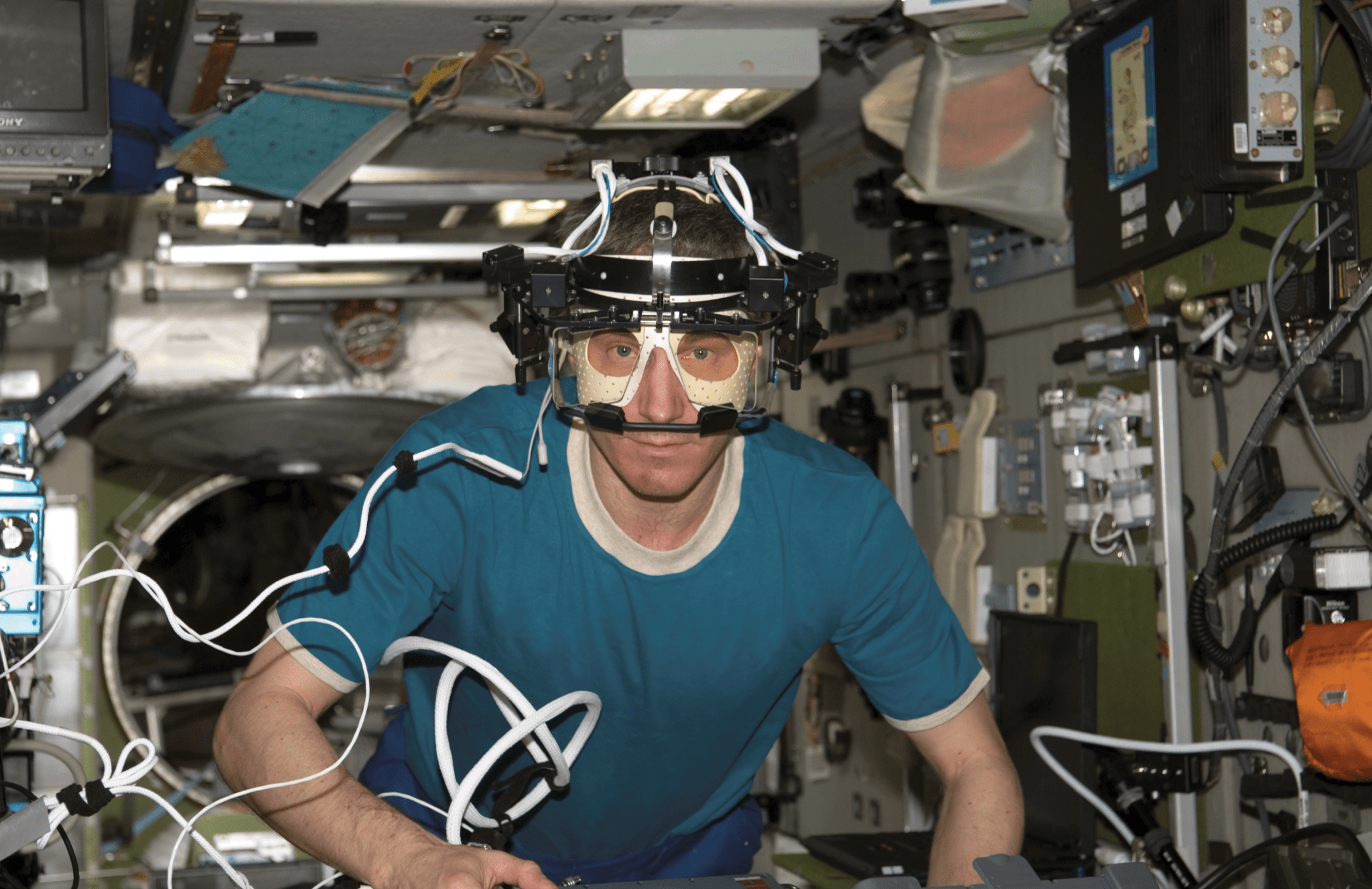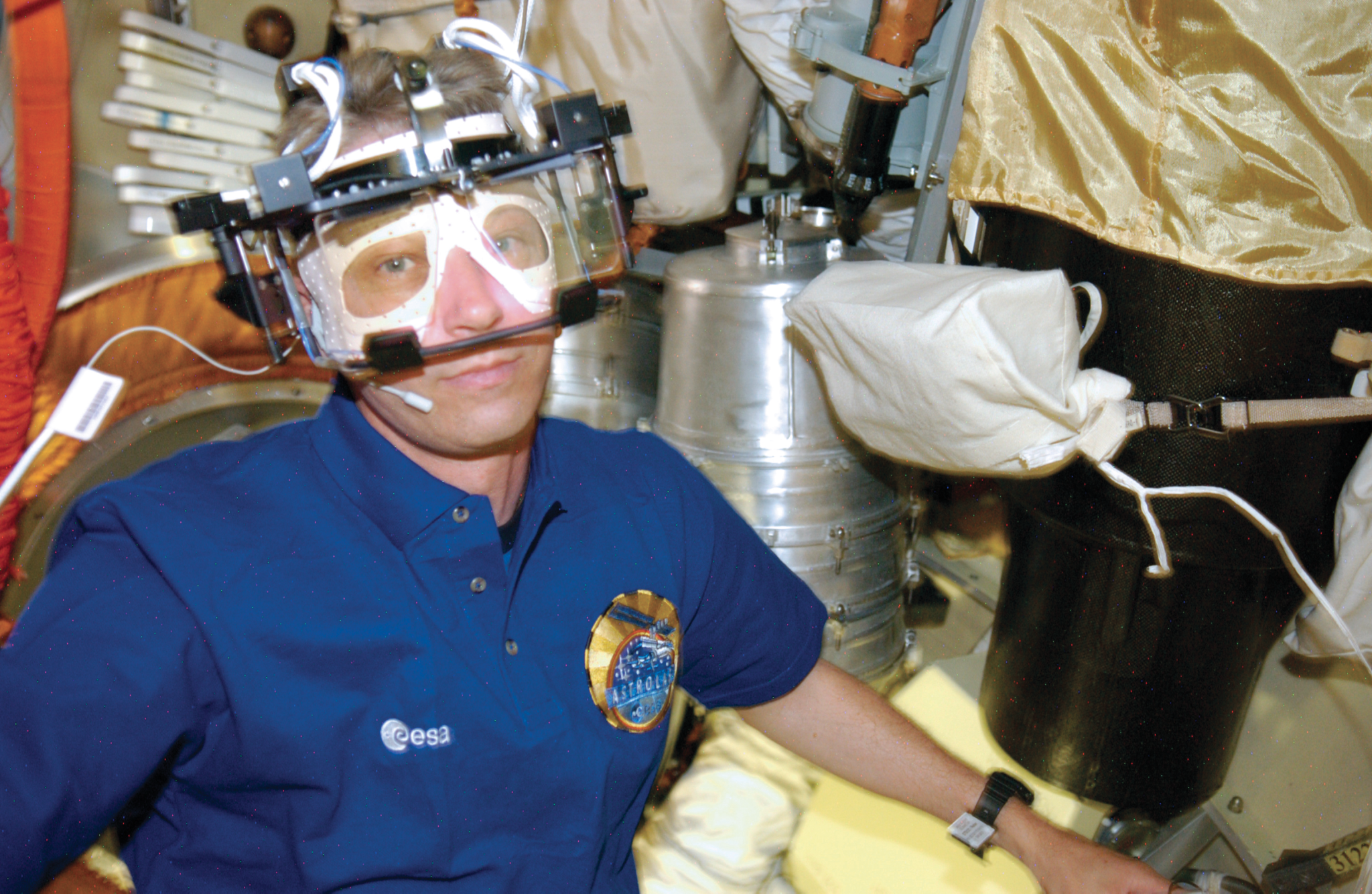Laser surgery to improve eyesight is widespread, and technology developed for use in space is now commonly used on Earth to track the patient’s eye and precisely direct the laser scalpel during the procedure.
The human eye can hold steady so a person can see a fixed point clearly, even while tilting or shaking his or her head. This reflex requires the brain to constantly interpret information from the inner ear to maintain balance and stable vision. An essential feature of this sensory system is the use of gravity as a reference.
The ESA (European Space Agency) Eye Tracking Device experiment researched mechanisms involved in this process and how the brain’s frames of reference are altered in space. The experiment used a specially designed headset fitted with image-processing chips that track the eyes without interfering with the wearer’s normal work. Results showed that balance and the overall control of eye movements are indeed affected by microgravity. These two systems work closely together under typical gravity conditions, but microgravity can cause them to become somewhat disassociated.
The engineers realized that in parallel with its use on the space station, the device had potential for applications on Earth, including tracking eye position without interfering with the surgeon’s work in laser surgery. The Eye Tracking Device equipment is now used in many corrective laser surgeries throughout the world.
































